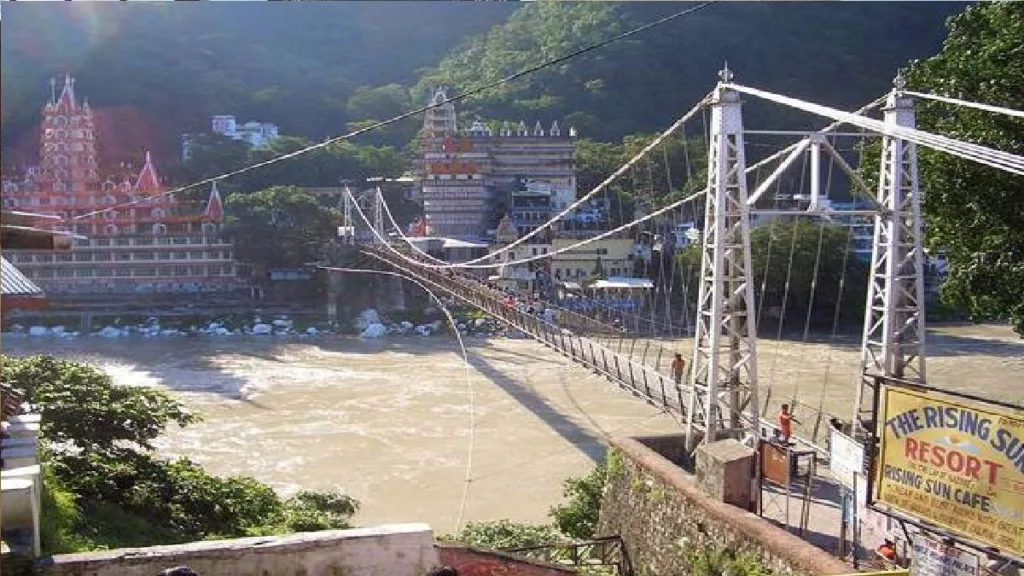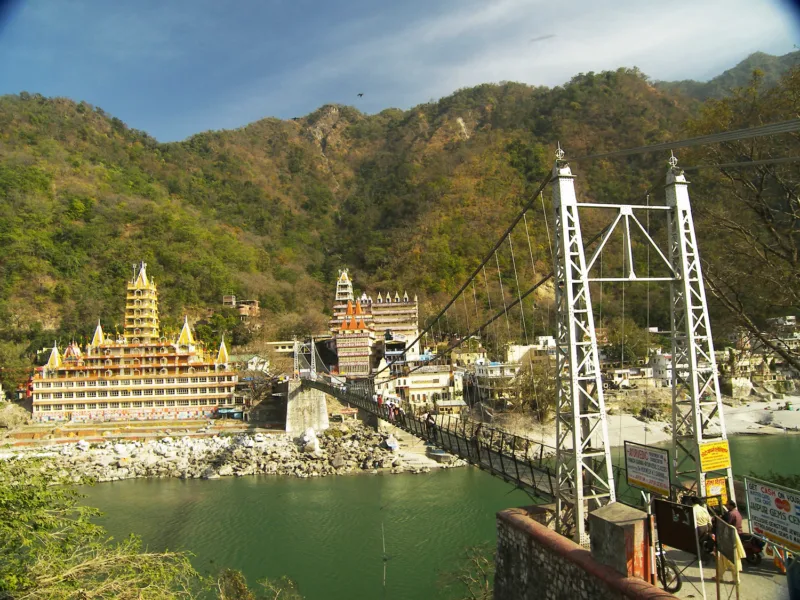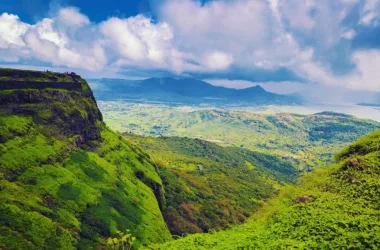Located in the heart of Rishikesh, India, the enchanting landmark Lakshman Jhula is a testament to both spiritual heritage and architectural grandeur. Crossing the heavenly Ganga River, this iconic suspension bridge invites travelers to a realm where myth, history, and natural beauty are perfectly intertwined.
Discovering History
Ancient Legends and Mythology
Legend has it that Jhula owes its name to Lord Lakshman’s brother, Lord Rama from the epic Ramayana. Lakshman is believed to have crossed the Ganga River on a jute rope in search of penance at the site of the bridge.
Construction and Development
Although the exact origins of Lakshman Jhula are still shrouded in mystery, historical records indicate that it was originally a jute rope bridge built in the 19th century. The current 450-foot-high iron suspension bridge was erected in 1939 to replace its predecessor.
Spiritual Significance
Pilgrim Destination
Lakshman Jhula is an important link for pilgrims traveling to the holy temples of Rishikesh and nearby spiritual temples. Haridwar and Badrinath centres. Devotees flock to this revered place to seek blessings and perform religious rituals that enrich their spiritual journey amid the serene Himalayan atmosphere.
Similar Article – Thrilling White Water Rafting in Rishikesh
Yoga Capital of the World
Rishikesh, often referred to as the “Yoga Capital of the World”, draws attention. yoga enthusiasts and practitioners around the world. With its serene surroundings and panoramic views, Jhula offers an idyllic setting for meditation, contemplation, and yoga practice that promotes inner peace and rejuvenation.
Architectural Marvel
Engineering Marvel
The architectural brilliance of Lakshman Jhula lies in its intricate design. . and ongoing construction. Spanning the mighty Ganges, the suspension bridge showcases exemplary engineering, perfectly merging functionality with aesthetic appeal.
Scenic Beauty
Delicate greenery in the foothills of the Himalayas, Lakshman Jhula offers breathtaking views of the river below and the surroundings. landscapes The bridge becomes a canvas painted in the hues of sunrise and dusk, mesmerizing visitors with its ethereal beauty and timeless charm.

A Melting Pot of Culture
Vibrant Market
Akud Lakshman Jhula is a vibrant market full of various shops. , cafes, and stalls. Visitors can immerse themselves in the living tapestry of local culture, taste traditional delicacies, buy souvenirs or engage in lively conversation with friendly locals.
Art and Music
Artists and musicians often gather near Lakshman Jhula and add creativity and spontaneity. atmosphere From soulful melodies echoing across the river to lively street performances, the bridge becomes a cultural stage that fosters a sense of community and camaraderie.
Heritage preservation
Conservation efforts
In recent years, the structural structure has been a source of concern. reasons Integrity and preservation of Lakshman Jhula. The goal is to ensure the preservation of this iconic landmark, balancing the needs of tourism with the need to protect its historical and cultural significance for future generations.
Sustainable Tourism
As awareness of the ecological impacts of mass tourism grows, initiatives are promoted initiatives. sustainable tourism around Lakshman Jhula has taken off. Responsible travel, eco-friendly infrastructure, and community tourism strive to minimize carbon footprint and maximize socio-economic benefits to local communities.
Similar Article – Places To Visit in Rishikesh
Embracing the charm of Lakshman Jhula
Lakshman Jhula attracts travelers with its timeless charm and weaving. together with stories of mythology, spirituality, and architectural grandeur. Whether you seek solace in its tranquil surroundings, immerse yourself in the vibrancy of culture, or marvel at its technological marvels, a visit to Lakshman Jhula promises an unforgettable journey into the heart of India’s spiritual heritage..









